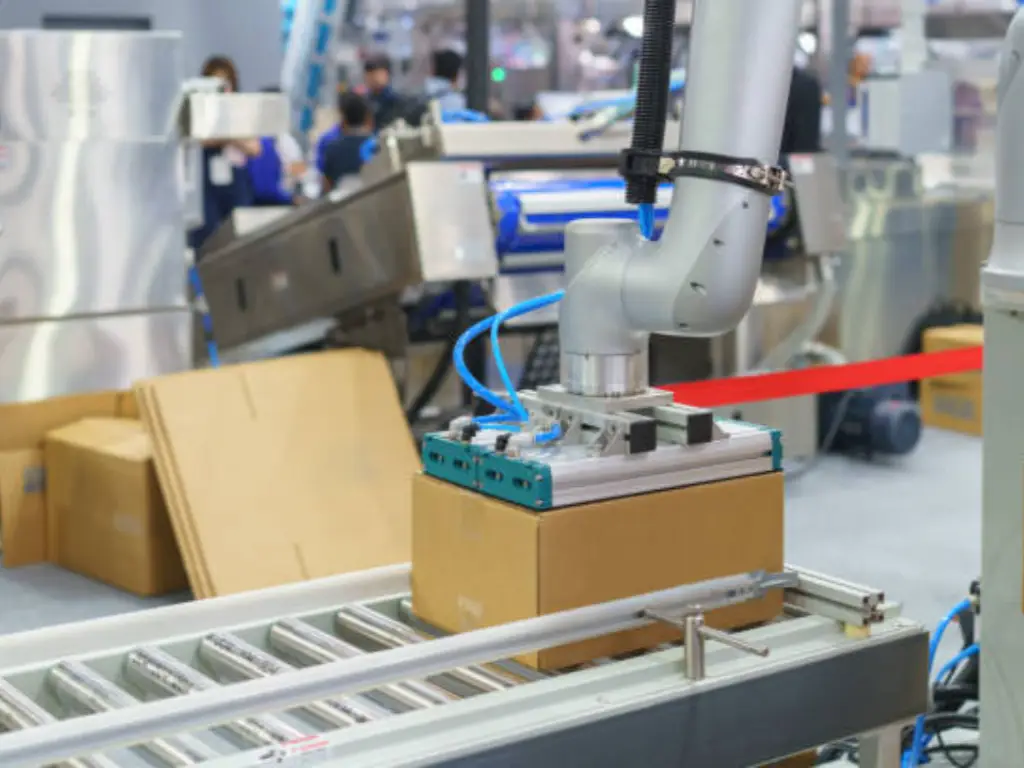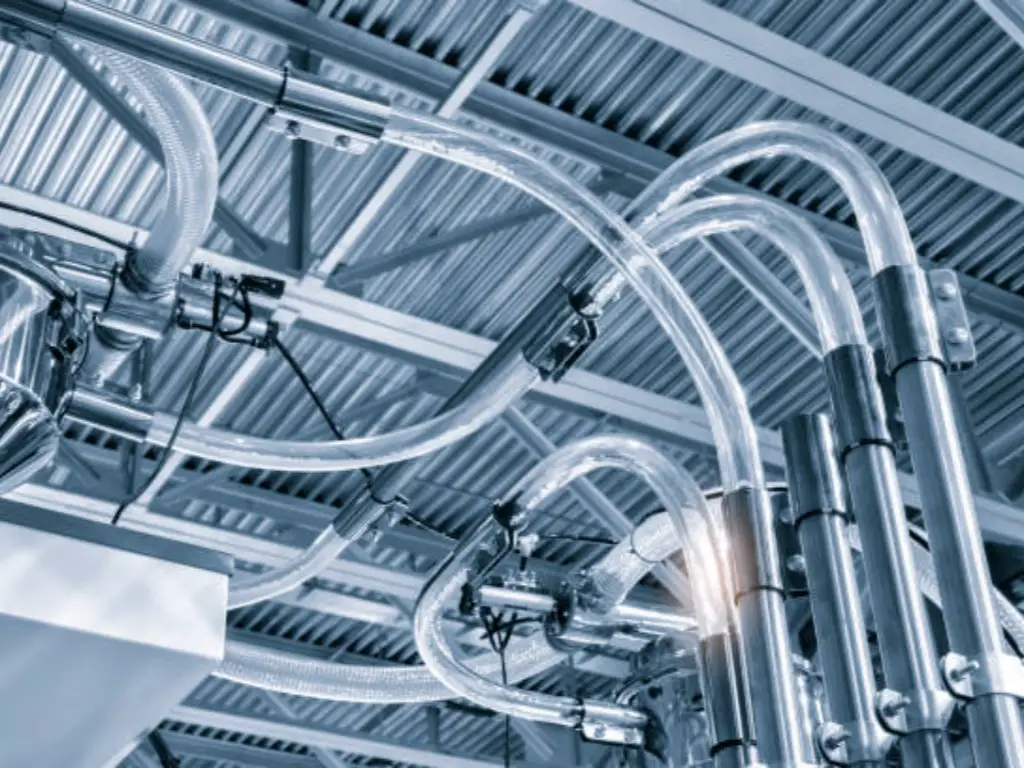Beyond Stacking: Why Mastering Palletization is Your Competitive Edge
At the end of every production line lies a critical, and often underestimated, transition point. This is where finished goods come into contact with the realities of the supply chain. For many companies, this juncture is a bottleneck—a point of inefficiency, increasing labor expenses, and unacceptable safety hazards. It is the realm of manual labor, where the monotonous burden of picking, turning, and theprocess of stackingboxes slows down the entire operation, forming a barrier to your productivity. This is not just an operational headache, but a direct challenge to your competitive position that inflates logistics costs.
It is to misunderstand palletization to consider it as simply piling boxes on wooden skids. Palletization is a strategic requirement in the current hyper-competitive market, with the modern use of pallets having roots that trace back to improving logistics during World War II. It is the focal point connecting the speed of your production with the requirements of contemporary logistics. It is the last, and most important, step in ensuring your product’s integrity and the efficiency of its path to the final customer. Get it right, and you open a new dimension of operational excellence. Make a mistake, and you are always held back by the weakest link in your own chain.
This guide is aimed at going beyond a superficial knowledge of palletization. We will break down the palletization process, examine its elements, and unveil how real mastery is not only in heavy robotics but also in the advanced systems that drive them. We will demonstrate how to transform this end-of-line process from a costly bottleneck into a competitive advantage.
What is Palletization? A Foundation for Modern Supply Chains
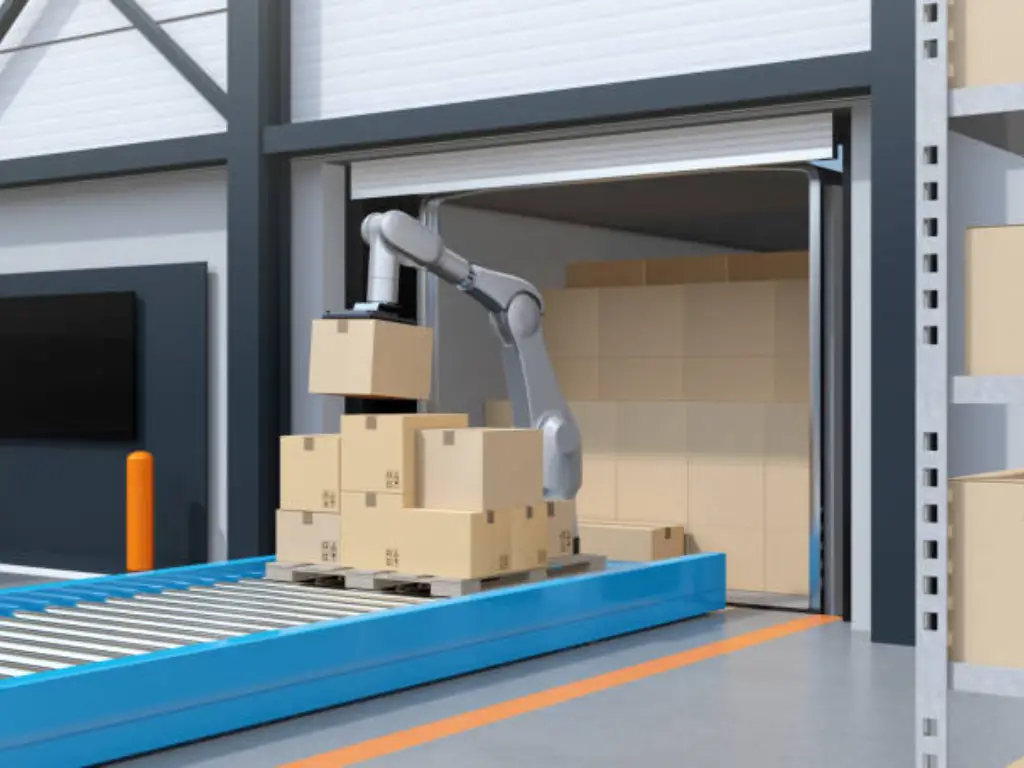
In its simplest form, the palletization process refers to consolidating individual items or cartons into a stable and manageable single unit on a pallet. This unit load, or pallet load, is specifically designed to be processed by industrial equipment like forklifts or a pallet jack. This simple definition, however, belies its deep influence. The foundation of efficient and modern supply chains is palletization.
In its absence, each box would need to be handled one at a time, a terribly slow and labor intensive task. By creating a standardized unit, palletizationintroduces a common language understood by both machinery and people, from the factory floor to the warehouse rack and onto the delivery truck. Three main advantages can be used to comprehend its core value:
- Radical Efficiency (Faster Handling): One forklift operator can move a single pallet of 50 boxes in the time it would take several workers to handle them separately. This is a quantum leap in material handling speed and transport efficiency. In an automated environment, this efficient handling is multiplied, allowing for a continuous, high-speed flow of goods equal to the output of the fastest production lines.
- Major Cost Savings (Less Labor and Damage): The reliance on manual handling is minimized, which directly creates cost savings and minimizes the financial risks of workplace injuries. Moreover, a properly stacked and secured pallet provides better product protection. It forms a stable, self-contained cube that reduces the risk of damage, impact, and movement during transit, resulting in a quantifiable decrease in costly product damage and returns.
- Basic Safety Enhancement (Enhanced Ergonomics):Manual palletizing is one of the main causes of musculoskeletal injuries in the industrial setting. You make the workplace a much safer place by shifting the heavy and repetitive lifting to machines. This not only safeguards your employees but also saves on downtime, insurance claims, and the indirect costs of a high-injury environment.
A Look Inside the Process: From Single Product to a Ready-to-Ship Pallet
To fully appreciate automated palletization, one should look at the exact, choreographed sequence of events that create a finished load. An average automated palletizing cell is a model of accuracy, which converts a flow of individual products into a secure, transportable unit load. The following is a chronological account of that trip:
| Stage | Description | Key Equipment / Function |
| Product Infeed | Finished products leave the production line and move on an infeed conveyor toward the palletizing cell. This conveyor acts as a buffer that controls product flow to maintain a smooth and steady pace. | Infeed conveyor, buffer control system |
| Orientation and Collation | Before pallet stacking begins, the cases must be precisely oriented. Boxes may be turned, spaced, or grouped depending on the pre-programmed pallet configuration. This is achieved using specialized equipment. | Pop-up transfer conveyors, small robot arms |
| Layer Forming | Once oriented, the cases are transferred to the layer-forming area. Here, they are arranged in rows to form a complete layer — the two-dimensional plan of the final stack. | Layer-forming conveyors, positioning sensors |
| Stacking (Layer Placement) | When a full layer is ready, the main palletizing robot takes over. Using its End-of-Arm Tooling (EOAT), it picks up the entire layer and places it precisely on the pallet. For interlocking patterns, slipsheets may be inserted between layers. | Palletizing robot, EOAT, slipsheet system |
| Pallet Handling and Discharge | The process relies on a steady supply of empty pallets. Once a pallet is fully loaded, it moves out of the cell on an exit conveyor, typically passing through an automatic stretch wrapper that secures the load for shipment. The cycle then repeats. | Exit conveyor, automatic stretch wrapper |
Since the moment when a single product comes out of the production line to the moment when a completely wrapped pallet is ready to be shipped, automated palletizing is an example of the unity between precision engineering and intelligent design. Every step, carefully coordinated and designed, is consistent, safe, and efficient. The outcome is a smooth conversion of loose products into stable ready-to-ship loads that flow easily through the contemporary supply chains. This process does not only optimize throughput, but also shows how automation is still redefining the standards of packaging and logistics performance.
The Core Components: Anatomy of an Automated Palletization System
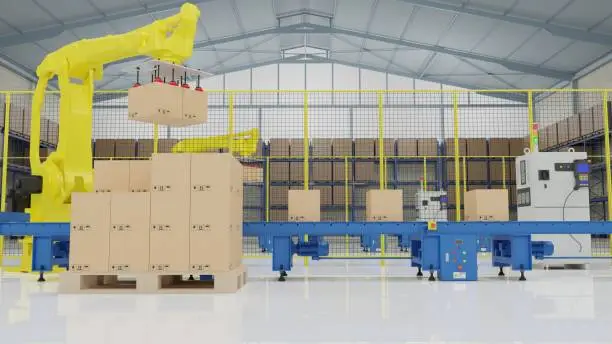
Although the process seems fluid, it is facilitated by highly specialized components operating in perfect harmony. Understanding these fundamental parts is key to appreciating the system’s capabilities and, more importantly, its potential points of failure.
The Robot & Conveyor: Muscle and Motion
The muscle of the system is the robotic arm of an industrial robot. Typically, a 4-axis or 6-axis articulated arm robot is designed for strength, speed, and precision. It does heavy lifting, repeating the same movement thousands of times a day without fatigue or error. Paired with the robot is the complex system of conveyors, which is necessary to ensure the continuous movement of products, transporting, accumulating, and pacing them to feed the robotic cell at the right time.
End-of-Arm Tooling (EOAT): The System’s Hands
When the robot is the muscle, the hands of the system are the End-of-Arm Tooling. This is the specially designed gadget attached to the wrist of the robot that physically touches the product. The EOAT is arguably the most important part of the system’s success because it has to be ideally suited for the type of product it is dealing with. Common types include:
- Vacuum Grippers: Use suction cups to pick up cases at the top, which is best for sealed, flat-topped boxes.
- Clam-Shell or Fork-Style Grippers: Use pneumatic or electric actuators to firmly hold a layer of cases at the bottom and sides, which is best suited to open-top cases or products in trays.
- Hybrid Grippers: Combine multiple techniques, including vacuum and side clamps, to work with a wide range of types of products or to deal with slipsheets.
Safety and Control Systems: The Brain and Nerves
The control system, the brain, orchestrates this whole mechanical process. The Programmable Logic Controller (PLC)is housed in an industrial control panel and executes palletization software that determines all the movements, sequences, and timing. The nerves are the safety system surrounding the cell. This system of safety fencing and light curtains forms a safety barrier, which immediately halts the system if a person enters the working area, guaranteeing a safe coexistence of human workers and heavy machinery.
Palletization in Action: Powering Industries and Warehouse Automation
Palletizationis not a universal solution. Its application is customized to the specific needs of various industries, where it is a foundational process that promotes broader operational efficiency.
- Food & Beverage: In the high-volume beverage industry, speed is key. Automated palletizing systems are needed to keep up with fast bottling and packaging lines, processing heavy cases and fragile bags without damage or slowing production.
- Pharmaceutical and Medical: There is no compromise on precision and cleanliness. Palletizing in this industry involves delicate handling of fragile products and sterile containers, with automation providing uniform processing that meets high regulatory standards.
- Consumer Goods and Retail: This industry is characterized by diversity. Palletizing systems must be versatile, able to switch over to different package sizes and stacking arrangements to suit a wide and fast-changing product mix.
The Cornerstone of Modern Warehouse Automation
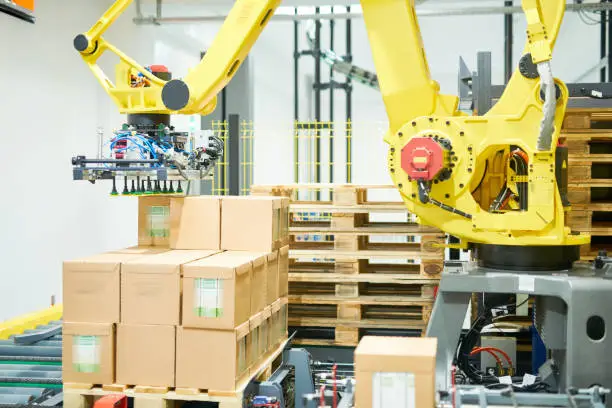
More importantly, the effects of palletization go way beyond the production floor. It is the unquestionable foundation of contemporary warehouse operations. The whole downstream ecosystem of automated logistics would come to a standstill without a well-formed, stable, and standardized pallet load.
- Standardization as a Universal Language: A properly palletized load is a standard interface that advanced automation can comprehend. AGVs and AMRs are programmed to interact with pallets of specific pallet dimensions and quality, such as those standardized by the Grocery Manufacturers Association (GMA) in the United States. Automated Storage and Retrieval Systems (AS/RS) rely on the geometric predictability of an ideal pallet to store and retrieve goods upon goods receipt.
- Seamless Integration: Visualize the perfect automated workflow. A product is packed, transported to a robotic cell, and arranged with geometric precision onto a pallet. When the final case is loaded, an AGV collects the completed pallet and takes it directly to an AS/RS infeed station, where it is swept away into storage. This continuous flow starts with quality palletization, improving inventory control and visibility of a product’s stock level.
- The Efficiency Multiplier: Efficient pallet stacking is an efficiency multiplier for the whole logistics chain. It minimizes handling time at each touch point and reduces errors. By ensuring load stability from the earliest stage, it significantly enhances the throughput and stability of the entire warehouse, transforming a mere stack of boxes into a potent tool for optimizing warehouse space.
The Pneumatic Advantage: Why Your System’s Performance Hinges on Air Power
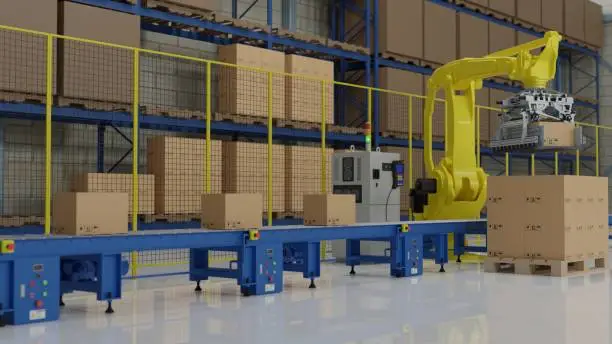
While the towering robotic arm captures the imagination, the true performance and reliability of an automated palletizer often hinges on a less visible, yet far more critical force: pneumatics. Compressed air animates the system’s most vital functions—it is the power source for vacuum generators, the force behind clamps, and the energy that drives actuators that handle your products.
The critical link is this: the End-of-Arm Toolingis almost universally powered by pneumatic components. This is where your investment in automation meets the physical reality of your product. And it is precisely here that a seemingly small decision about component quality can have an outsized impact on your entire operation. Using inferior pneumatic components is a high-stakes gamble that introduces points of failure:
- A slow-acting solenoid valve can disrupt system timing, creating a new bottleneck.
- A leaking vacuum cup can cause intermittent product drops, leading to costly damage and line stoppages.
- Prematurely worn seals on a pneumatic gripper can lead to inconsistent clamping pressure, resulting in unstable layers and dangerously insecure pallet loads that can topple.
These are not minor inconveniences; they are direct assaults on the very ROI you sought to achieve. The cost savings are negated by product damage, and safety is compromised. This is why investing in high-durability, high-precision, and high-response pneumatic componentsis an essential investment in your system’s long-term reliability. Choosing superior pneumatic parts ensures that your automation investment pays dividends for years to come.
At Hebai-Omch, we understand that the true strength of automation lies not in what’s visible, but in the precision and reliability of its pneumatics. The real performance of every system depends on the consistent quality of its cylinders, FRL units, and pneumatic valves—the quiet forces that keep every motion smooth, fast, and controlled. That’s why we engineer our components to perform under pressure, cycle after cycle. Because investing in superior pneumatics isn’t just a smart choice—it’s the key to ensuring lasting performance, uptime, and profitability across your entire automation line.
Choosing the Right Palletization Strategy for Your Business
Not all companies have the same path to optimized palletization. The correct strategy is based on an objective evaluation of your operational reality. To make the right decision among the many types of palletizers, one has to balance a number of important factors:
Here’s your content formatted into a clear, professional table:
| Consideration | Description | Key Points / Recommendations |
| Throughput and Speed | For low-volume operations, manual palletizing can be sufficient. As production speed increases, fully robotic palletizers become essential to maintain reliability and consistency. Inline palletizers are specifically designed for high-speed production lines. | Use manual palletizing for low volume; switch to robotic or inline palletizers for higher throughput. |
| Product and Pattern Complexity | When handling products of varying sizes and weights, specialized handling and intelligent arrangement are required. Complex, interlocking stacking patterns demand precision. | Employ palletization software to design and manage complex stacking patterns accurately. |
| Pallet and Load Security | The type of pallet—wooden or plastic—depends on the industry and load requirements. A solid bottom deck improves stability. Additional protection, such as corner protectors, enhances load safety during transport. | Choose pallets suited to your industry; use cardboard or plastic corner protectors for added stability. |
| Budget and ROI | Fully automated systems require substantial upfront investment. However, they deliver long-term savings through improved efficiency and reduced labor costs. | Conduct a detailed ROI analysis before investing in full automation. |
| Floor Space | Robotic palletizing cells need a defined and secure footprint. Efficient space management is critical for installation and operation within existing facilities. | Evaluate your facility layout to ensure adequate space for robotic systems. |
Future-Proof Your Logistics: Begin Your Automation Journey Today
We have deconstructed the palletization process and examined the critical components that ensure its success. The conclusion is clear: effective palletization is no longer a luxury but a foundational element of any competitive logistics operation. It is the starting point for efficiency, the guardian of product quality, and the gateway to broader automation.
As you evaluate your own end-of-line processes, look for the bottlenecks and hidden costs of manual labor and product damage. The journey toward automation may seem complex, but it begins with a single step: a decision to transform a point of weakness into a source of strength. When you are ready to build a system defined by reliability and performance, remember that the most powerful machines depend on the quality of their smallest parts. Explore the components that provide the dependable power and precision your automation deserves. Your future-proof logistics operation starts now.
At Hebai-Omch, we make that transformation possible. With over three decades of expertise in pneumatic technology, we deliver high-performance cylinders, FRL units, and valves that form the backbone of efficient, reliable automation. Partner with us—and turn air power into your competitive advantage.

